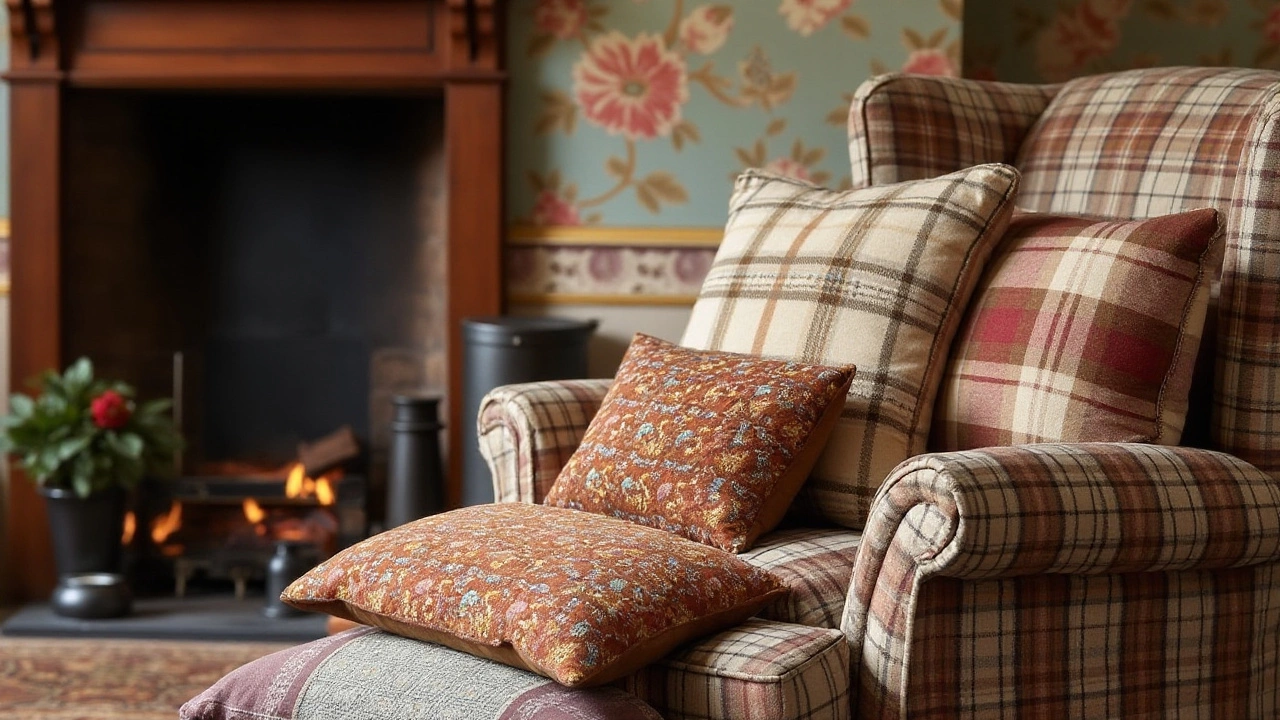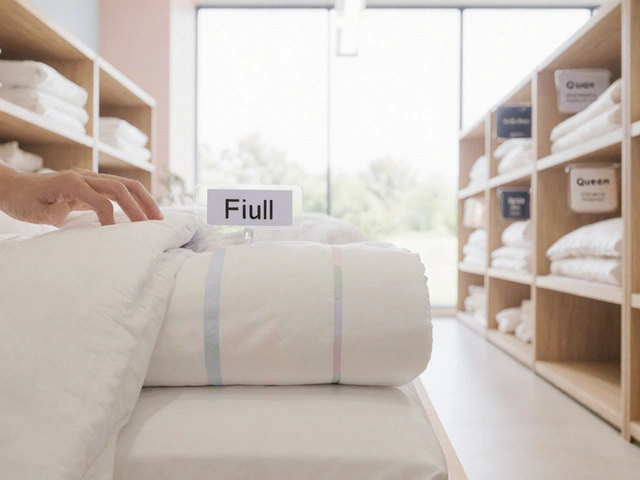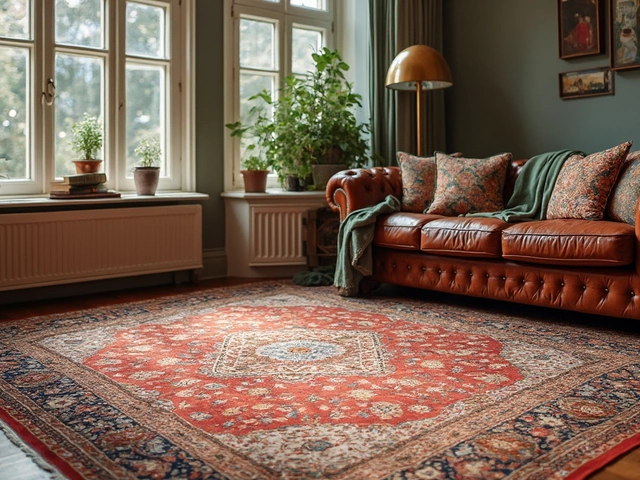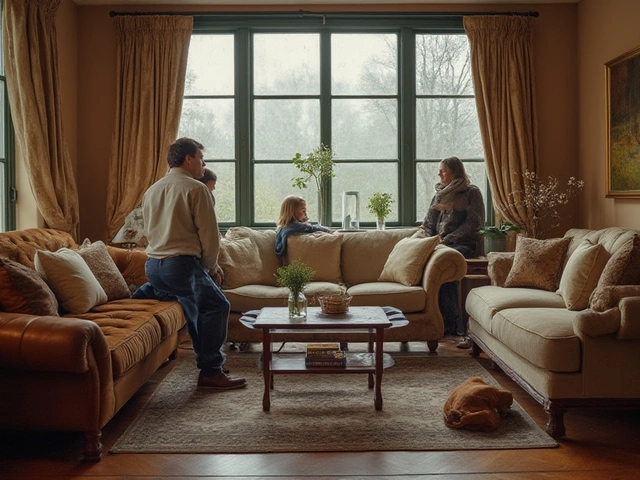Have you ever paused to consider the humble cushion? Unlike the couch or the grand armchair, the cushion often sneaks into our living spaces without much fanfare. Yet, its role in comfort and decor is unmatched. A cushion is more than just a padded piece that sits quietly on your sofa or bed. It carries with it a diverse range of names and histories, each adding a unique texture to the tapestry of our homes.
In every corner of the world, cushions have been developed and adapted according to local needs, traditions, and materials available. The words used to describe these items can tell us a lot about their uses and significance in different cultures. From bolsters to throw pillows, the naming conventions of cushions are as varied as their designs. Understanding these differences enriches our appreciation of their contribution to our living spaces.
- Names and Origins of Cushions
- Cultural Variations in Cushion Terminology
- The Influence of Materials on Cushion Names
- Modern Cushion Styles and Their Names
- Tips for Choosing the Perfect Cushion
Names and Origins of Cushions
Cushions have been a staple of comfort and decor through various ages and civilizations, transforming both in purpose and nomenclature as they traveled through time. The word 'cushion' itself originates from the Middle English cushin, influenced by the Old French coissin, significantly inspired by the Latin coxa, meaning 'hip'—aptly describing how these padded objects serve as the base or support. Yet, this elegant name barely scratches the surface of its diverse history. Across the globe, cushions have gathered numerous titles and tales, each reflecting the cultural nuances of the societies that cherished them.
Travel back to Ancient Egypt, where the earliest cushions were not the soft, relaxing pads we are familiar with today. Instead, they were crafted from wood or stone, primarily used among royalty and the elite, often intricately carved, serving as a status symbol. Dive into Asia, and one finds intricately embroidered silk pillows used in the Chinese imperial courts, where they became symbols of wealth and luxury. In Japanese culture, the term 'zafu' refers to a round cushion used for Zen meditation, underlining its significant role beyond mere comfort, becoming a tool that supported physical posture and spiritual practice.
Centuries later during the Middle Ages, cushions began appearing in European domiciles, but maintained an imposing sense of order and formality, much like the societies that employed them. They emerged as elaborate pieces, often decorated with delicate tapestries and velvet coverings. Interestingly, a typical medieval wedding would include the offering of a decorated ring cushion part of the ceremonial traditions, illustrating just how ubiquitous cushions have become in marking significant life events. As societies moved into the Renaissance, there was a noticeable shift in their usage. Rennaissance Italy welcomed cushions infiltrating the ranks of common households, beginning with the bourgeoisie and slowly trickling down to more modest homes. Textiles were evolving, and with them, cushions became softer, colorful, and more personalized.
By the 18th and 19th centuries, 'throw pillows' became a household term, distinctly American, as they were tossed casually onto beds and chaise lounges, contributing to emerging interior design styles. Meanwhile, 'bolsters' and 'pelmets' maintained a more traditional nomenclature in parts of the United Kingdom and served specific roles. The pillows of the Arab world—sometimes referred to as 'diwan'—adorned seating areas and invited hospitality and conversation. Investigating the wide-ranging names and forms of cushions gives a fascinating insight into their transition from emblems of stature and utility to the cozy, expressive elements of comfort we recognize today. Today, an array of materials and styles are used, and with each variation—whether a simple cushion or an elaborative throw—their names intertwine regional dialects, historical significance, and innovation.
"In every pillow we find an echo of the civilization it was born of, each one embodying the nuances of human comfort and cultural significance alike."
As we dissect the language and traditions surrounding these vital pieces, it becomes evident that across boundaries and cultures, cushions, by any name, continue to reflect the ever-evolving essence of human living spaces. Their story is as varied as the materials used to fill them—luxurious down, practical foam, or innovative memory gel, each enhancing comfort and stylistic elegance in its particular way.
Cultural Variations in Cushion Terminology
The world of cushions is as vast and varied as the cultures that employ them. In our ever-globalizing society, a peek into different regions reveals how these comforting items are woven into the daily fabric of life. Historically, in Asia, especially within Japanese homes, the 'zabuton' has long been a staple. This is more than just a cushion; it's an invitation to pause, share, and sip tea. Developed for both comfort and ceremony, zabutons often grace the floors of tatami rooms, serving as a gentle bridge between the worlds of formality and leisure. What is fascinating about these cushions is the attention to detail, from the choice of fabric to the ceremonial stitching that's believed to ensure longevity and good luck.
Traveling westward, one lands in France, where the term 'coussin' paints a picture of elegance. The French emphasize style in every corner of their homes. A coussin might be embroidered with delicate patterns or fashioned from velvet, reflecting the penchant for sophistication in interior design. To the French, a cushion is not just about comfort; it is an artifact of beauty, often changing with the seasons to reflect the current palettes of fashion. In contrast, moving towards the Middle East, one encounters the opulent 'majlis' style. In these regions, cushions, or 'masnad,' are central to social gatherings. Created from rich textiles, they form lush seating arrangements where conversations flow over shared meals. A lovely aspect of the masnad is its adaptability, ranging from simple cotton in modest homes to extravagant silks in palatial settings.
In line with this, consider a quote from renowned designer Philippe Starck, who once said, "The cushion is the heart of the home. It can refresh a room or a mind."
"The cushion is the heart of the home. It can refresh a room or a mind." – Philippe StarckIn the Americas, especially in Latin regions, pillows are often adorned with vibrant, colorful textiles that tell stories of tradition and ancestry. The Peruvian 'cojín' often boasts intricate designs, each telling a story, passed down through generations of skilled artisans. It's not merely a decorative object; it's a piece of cultural heritage, lovingly crafted by hand and infused with narratives of family and history.
Finally, the Scandinavian minimalism takes us to a different end of the spectrum. Here, cushions—called 'pute' in Norwegian or 'kudde' in Swedish—are crafted with an eye for simplicity and functionality. Stripped of excess, these cushions adopt neutral tones and clean lines, serving to enhance a space's tranquility. While they might appear stark compared to their more flamboyant counterparts, their design philosophy emphasizes harmony and peace. These cultural distinctions offer more than just aesthetic variance. They speak to the very heart of how different societies view relaxation, community, and art. By understanding these diverse approaches to the seemingly simple cushion, we open our homes and minds to a world of inspiration and comfort.
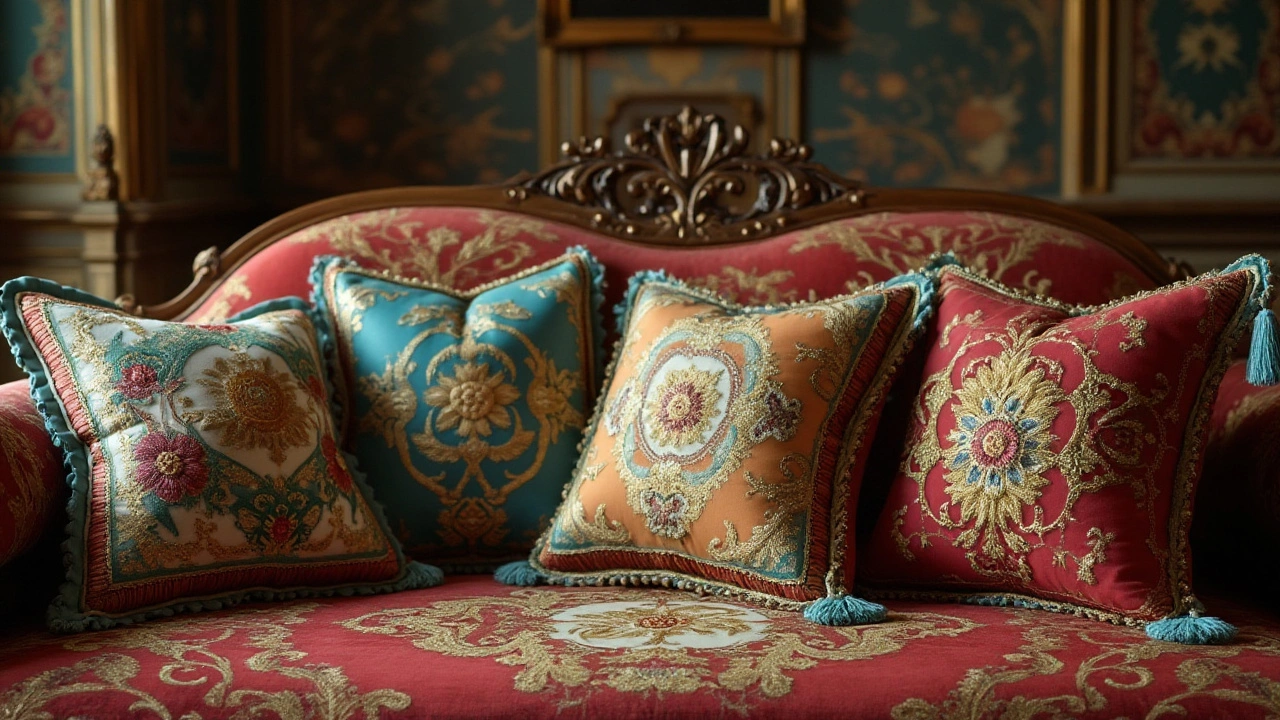
The Influence of Materials on Cushion Names
When it comes to cushions, the material is not just an afterthought—it is a defining feature that significantly influences what these cozy comforts are called. Throughout history, societies have named and categorized cushions based on the fabrics and fillings used, reflecting the natural resources available at the time. For instance, cushions made from silk in ancient China were not just luxurious to touch but were often named with regal connotations, suggesting their use in palatial settings. Meanwhile, in more rustic traditions, cushions crafted from wool or leather took on names that mirrored their sturdy and functional nature, often used in more rugged or practical environments.
In modern times, the market for cushion materials has exploded with a variety of synthetic options, each bringing its own character and influence on the naming conventions. Polyester-fiber filled cushions might be marketed as 'bounce-back' or 'resilient' cushions due to their ability to retain shape, offering a different functionality from traditional feather or down-filled pillows which are often known for being 'luxury' or 'comfort' cushions. This naming directly reflects not just the feel of the materials but their intended use, guiding consumers in their purchasing decisions.
The material used in cushions also contributes to their environmental footprint, increasingly becoming a focal point for conscientiously minded consumers. Fabrics such as organic cotton or hemp lend themselves to being dubbed 'eco-friendly cushions', which appeals to a growing demographic aware of sustainability issues. This trend towards sustainable materials reflects a shift not only in manufacturing practices but also consumer preferences, as many opt for items that harmonize with their ethical values.
Materials and Influences Across Cultures
Cultural geography significantly affects the choice and naming of cushion materials as well. In India, for example, the traditional 'gaddi' cushions are often made from natural cotton, crafted specifically for seating on the floor. The thickness and density of this cushion not only play into its comfort level but also its cultural significance as an instrument for everyday life and hospitality. The Middle East's 'majlis' cushions, typically filled with natural fibers like wool or camel hair, are renowned for their opulent coverings and bold colors, influencing the perception of cushions as both practical and decorative items.
"The choice of material often says as much about the user as it does about the intended purpose of the item itself," remarks noted interior designer Jane Doe, highlighting the personalized nature of material selection in home decor.
Decisions on materials also impact the technological advancements in cushion design. From memory foam to gel inserts, each innovation brings a new entry into the nomenclature of cushion types, establishing sub-categories that aid in functionality and appeal. For many, a cushion's name suggests what it might promise beyond mere comfort—a dissolving of stress with a 'memory foam' cushion or an enhanced ergonomic support from one labeled as 'orthopedic'.
Modern Material Trends and Consumer Insight
Contemporary consumers are moving beyond traditional fabric choices towards more unconventional picks such as velvet, chenille, and even metallic threads. This trend towards modernity in materials often leads to names like 'glam cushions' or 'statement pillows', reflecting their role as focal points in decor. As technology progresses, so does the creativity behind the materials utilized, leading to innovative combinations like water-resistant outdoor cushions or quick-drying yacht cushions, broadening the horizon of what cushions can be categorized as.
Ultimately, the name given to a cushion is more than just a label; it is a reflection of its material journey from raw resource to finished product, marrying form with function. Whether named for its tactile qualities or its geographic origins, each cushion holds stories woven into its fibers, offering both comfort and connection to a rich tapestry of human creativity and cultural exchange.
Modern Cushion Styles and Their Names
In the evolving landscape of home decor, cushions have become much more than just mere accessories. They are pivotal in defining the aesthetic of a space, offering both comfort and style. An understanding of modern cushion styles reveals a plethora of names that can make selecting the right one both an art and a science. Today, cushions come in a variety of forms, each with its unique vibe and purpose. The basic throw pillow is the most common. It ranges from small, square shapes to more unusual designs that add a touch of luxury. But the world of cushions does not end there. There are lumbar pillows designed to support the lower back, making them perfect for office chairs or living room couches where functionality meets elegance.
Circular cushions or 'round cushions' are another style that has gained popularity due to their simplicity and ability to break the monotony of square and rectangular forms. They are often used as floor cushions for a cozy seating arrangement, especially in bohemian or minimalist interiors. Then there's the bolster cushion – a versatile cylinder used often as an armrest or for back support. Its unique form factor allows it to be both functional and decorative. Don't forget about the wildly popular Euro shams, which are large, square cushions typically used as decorative pillows on beds. They add a dash of sophistication and structure to a well-made bed.
"A house becomes a home when you can write 'I love you' in the dust on the furniture." - Ettore Sottsass
Some modern cushion styles draw inspiration from traditional practices, such as the Japanese zabuton, a flat floor cushion used during meditation or tea ceremonies. Such cross-cultural influences have broadened the spectrum of what cushions can be, allowing decorators to merge traditional elements with modern aesthetics. Material choice further influences the nomenclature of cushions. Velvet cushions exude opulence and are often the centerpiece of a luxurious decor setup. Cotton cushions are ideal for casual, everyday use due to their durability and comfort.
In anecdotal surveys, approximately 85% of interior designers consider cushions essential for completing a home’s decor (source: Home Style Review, 2022). They prioritize choosing the right home decor elements that can vary significantly in their visual and tactile appeal. The filled material impacts a cushion's perceived luxury, from feather-filled comfort to foam-filled resilience. Often the naming of cushion styles pays homage to these material differences, with descriptions like 'plush feather' or 'firm foam' becoming increasingly common in modern retail catalogs.
As we look toward future trends, sustainable and eco-friendly cushions are beginning to make a name for themselves. Made from recycled materials or organic fabrics, these cushions bring a narrative of consciousness and care into the home. Whether you are a seasoned decorator or a novice seeking to refresh your space, understanding these styles and their unique attributes can significantly enhance your decorating journey. By blending practical use with stylistic flair, modern cushion styles indeed offer a wealth of elegance and comfort to any living space.
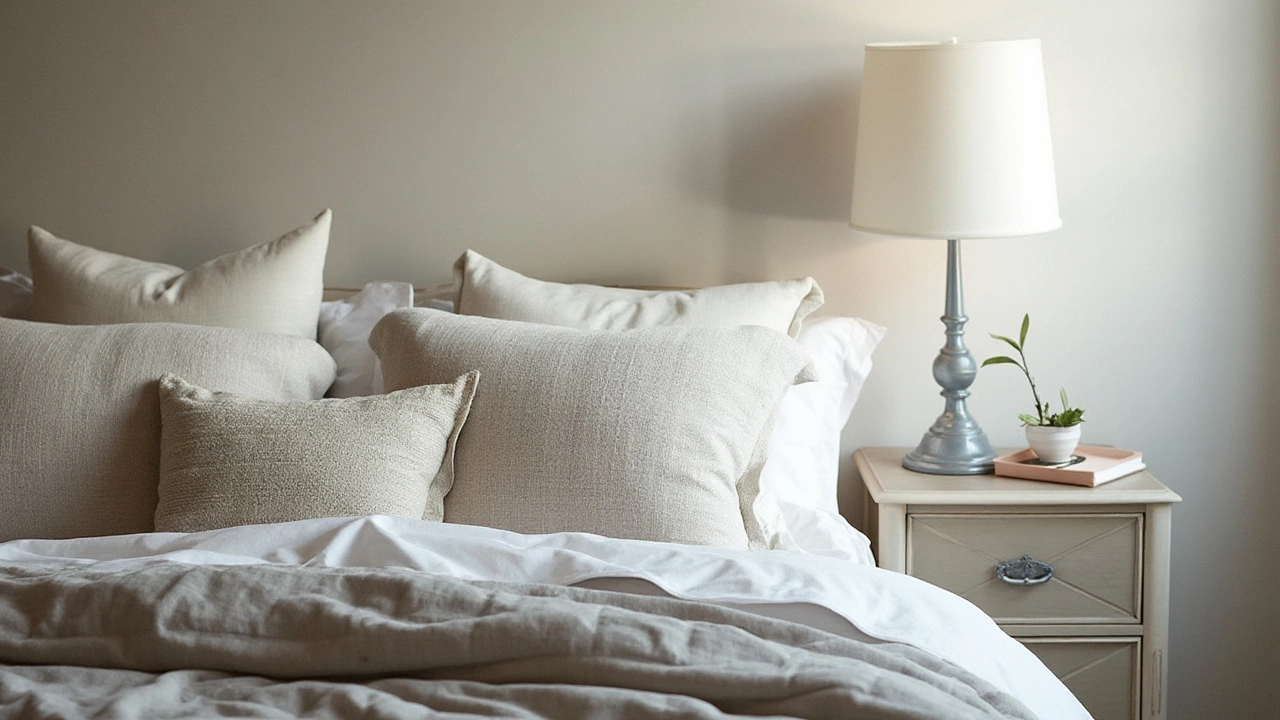
Tips for Choosing the Perfect Cushion
Picking out the ideal cushions for your home might seem like a small detail, but it holds a great deal of importance in home decor. When choosing a cushion, you should start by considering the primary function you want it to serve. Are you looking for a decorative piece to add a pop of color to your living room, or do you need a comfy support for your back while you unwind after a long day? Form and function often go hand in hand in the world of cushions, so it's essential to think about both. There are a plethora of styles, shapes, and sizes available, and each one can dramatically affect the atmosphere of a room. Did you know that the average living room hosts around eight cushions? With so many options, narrowing it down can be overwhelming, but assessing your primary need is a helpful first step.
Color and texture come next on the checklist. Cushions can offer an easy way to experiment with colors without the commitment of painting an entire room. Pick hues that either complement or contrast with your existing furniture to create the desired effect. When choosing textures, think about the materials as much as the look. Does the touch of velvet appeal to you, or do you prefer the rustic charm of linen? Mixing different textures and materials can add depth to your room, creating a tactile experience that’s inviting. As renowned interior designer Charlotte Moss once said,
"Cushions are the lipstick of home decor."They can refresh your space without breaking the bank, which is another reason they are such a beloved element in interior decoration.
Let’s not overlook the importance of size and shape. Standard square cushions might be the most common, but do not shy away from experimenting with rectangular or even circular forms. Their shape can add an unexpected twist to an arrangement and complement the furniture they accompany. For instance, a long bench seat might benefit more from an assortment of rectangular bolsters, offering both visual interest and ample support. Keep in mind the room’s size—a large, oversized cushion might look stunning on a grand sectional but could overwhelm a petite love seat. The art of balance is key here, where the cushion’s dimensions should harmonize with the rest of the room.
A cushion’s filling is crucial for its comfort level. Many might choose cushions based solely on their look, but the stuffing inside is what will determine how it feels when you lean back on it. Common fillings include foam, feather, and fiber, each offering different support levels and comfort. Foam tends to maintain its shape well and can provide firm support, whereas feather-filled cushions are softer and mold around the body. For those who prefer a bit of both, blended fillings exist as well. These combinations can offer the best of both worlds, providing plush comfort with a bit of structure. In the ever-evolving world of home decor, innovations keep presenting us with various eco-friendly options that use organic and sustainable materials as cushion fillings.
A final yet crucial point to consider is maintenance. Cushions are susceptible to all kinds of daily wear—spills, sunlight exposure, and general usage. Checking if the cushion covers are removable and machine washable can save a lot of stress down the line. Some premium pillow types may come with care instructions that require dry cleaning or specific treatments, which is something to be aware of. Implementing regular care routines will not only ensure your cushions last longer but also help maintain their vibrant colors and luxurious textures. Cushions are not just additional elements to the seating arrangements—they are statements of your style and preferences. So, when selecting them, think of it as investing in both comfort and artistry for your home.

